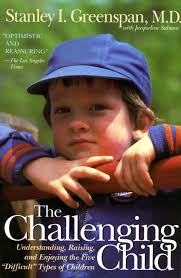
The Challenging Child by Stanley I. Greenspan and Jacqueline Salmon
Visit our website | Check our blog
Introduction
The Challenging Child by Stanley I. Greenspan and Jacqueline Salmon is a groundbreaking book that addresses the complexities of raising children with difficult behaviors. This book is essential for parents, educators, and healthcare professionals seeking to understand and support challenging children.
Key Concepts
Understanding the Challenging Child
Dr. Greenspan's approach is centered on understanding the emotional and developmental needs of children. He emphasizes the importance of creating a nurturing environment that supports the child's growth.
The Developmental, Individual-Difference, Relationship-Based Model (DIR)
The DIR model is a comprehensive framework used to understand and support children with developmental challenges. It focuses on three main components:
- Developmental - Understanding the child's developmental level.
- Individual-Difference - Recognizing the unique ways each child processes information.
- Relationship-Based - Building supportive relationships to promote development.
Strategies for Parents
Creating a Supportive Environment
One of the key strategies discussed in the book is creating a supportive environment for the child. This includes:
- Providing consistent routines.
- Establishing clear expectations.
- Offering emotional support.
Building Strong Relationships
Dr. Greenspan emphasizes the importance of strong relationships in a child's development. This involves:
- Spending quality time with the child.
- Engaging in meaningful interactions.
- Understanding the child's unique needs.
Case Studies
The book provides numerous case studies that illustrate the application of the DIR model. These case studies offer valuable insights into how the model can be used to support challenging children.
Case Study 1: Michael
Michael, a seven-year-old with behavioral challenges, struggled in school and at home. Through the DIR model, his parents and teachers were able to create a supportive environment that met his unique needs, leading to significant improvements in his behavior.
Case Study 2: Sarah
Sarah, a five-year-old with developmental delays, benefited from a personalized approach that focused on building strong relationships and understanding her individual differences. This approach helped Sarah make significant progress in her development.
Tables and Data
Table 1: Key Components of the DIR Model
| Component | Description |
|---|---|
| Developmental | Understanding the child's developmental level. |
| Individual-Difference | Recognizing the unique ways each child processes information. |
| Relationship-Based | Building supportive relationships to promote development. |
Table 2: Strategies for Creating a Supportive Environment
| Strategy | Details |
|---|---|
| Consistent Routines | Providing a predictable daily structure. |
| Clear Expectations | Setting and communicating clear rules and guidelines. |
| Emotional Support | Offering understanding and empathy. |
Conclusion
The Challenging Child by Stanley I. Greenspan and Jacqueline Salmon provides a comprehensive guide for parents, educators, and healthcare professionals working with challenging children. By understanding and applying the principles of the DIR model, it is possible to create a supportive environment that fosters growth and development in children with behavioral challenges.
For more information, visit our website and check out our blog.



